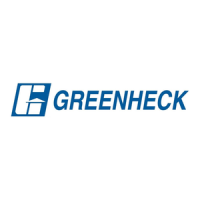MODEL IGX
Make-Up Air Unit
Installation, Operation and Maintenance Manual
Indirect Gas Fired Unit Installations
Units are listed for installation in the United States and Canada
• Installation of gas fired duct furnaces must conform with local building codes. In the absence of local
codes, installation must conform to the National Fuel Gas code, ANSI Z223.1 or in Canada,
CAN/CGA-B149 installation codes.
• All electrical wiring must be in accordance with the regulation of the National Electric Code,
ANSI/NFPA No. 70.
•Unit is approved for installation downstream from refrigeration units. In these conditions, condensate
could form in the duct furnace and provision must be made to dispose of the condensate.
**WARNING**
Improper installation, adjustment,
alteration, service or maintenance can
cause property damage, injury or death.
Read the installation, operating, and
maintenance instructions thoroughly
before installing or servicing this
equipment.
**FOR YOUR SAFETY**
The use and storage of gasoline or other
flammable vapors and liquids in open
containers in the vicinity of this appliance
is hazardous.
**FOR YOUR SAFETY**
If you smell gas:
1. Open windows.
2. Don’t touch electrical switches.
3. Extinguish any open flame.
4. Immediately call your gas supplier.


